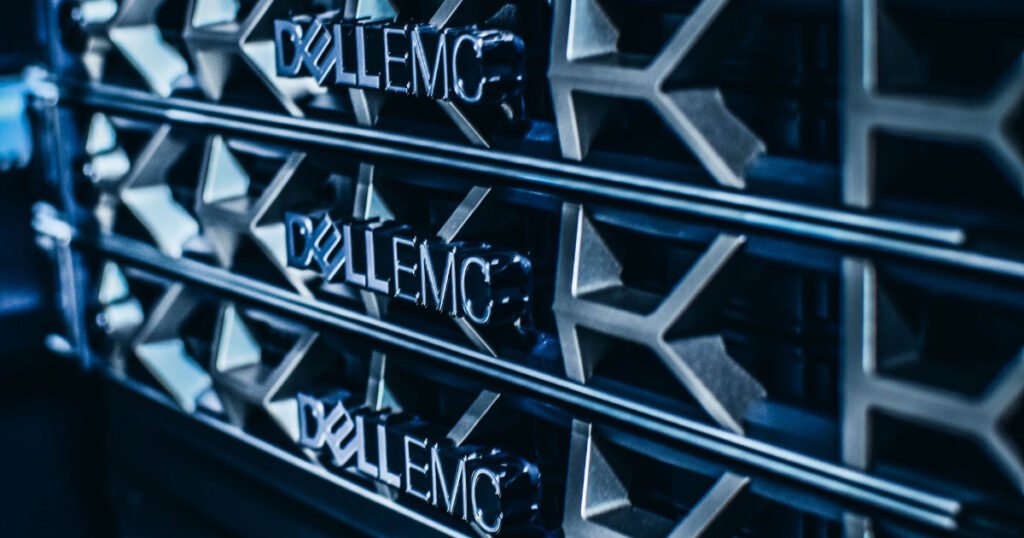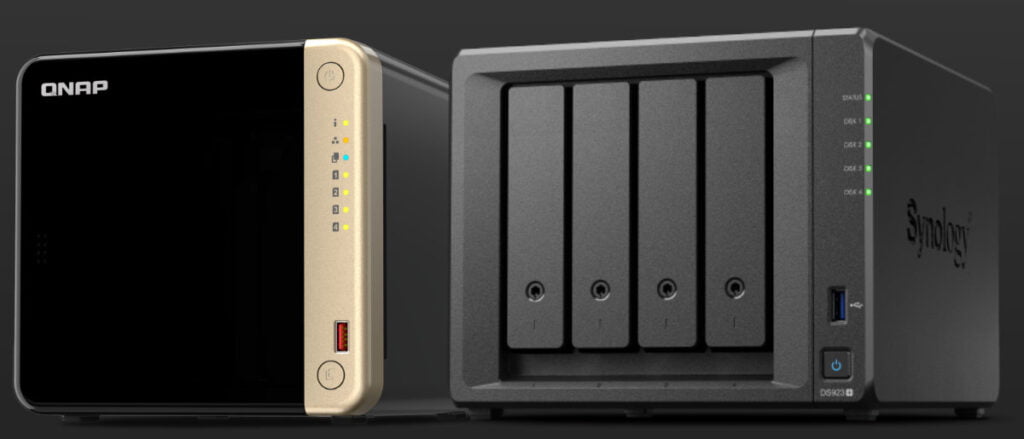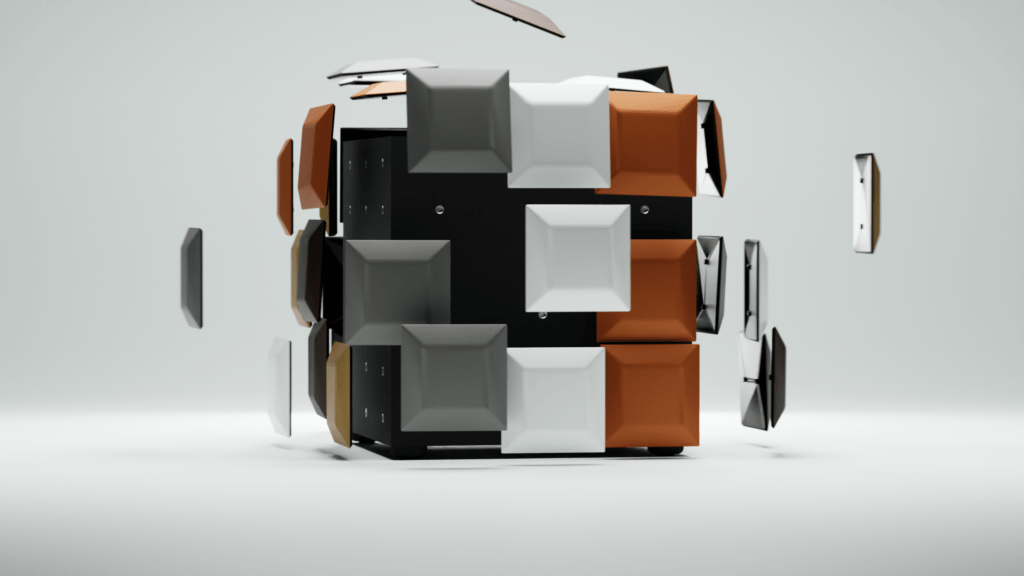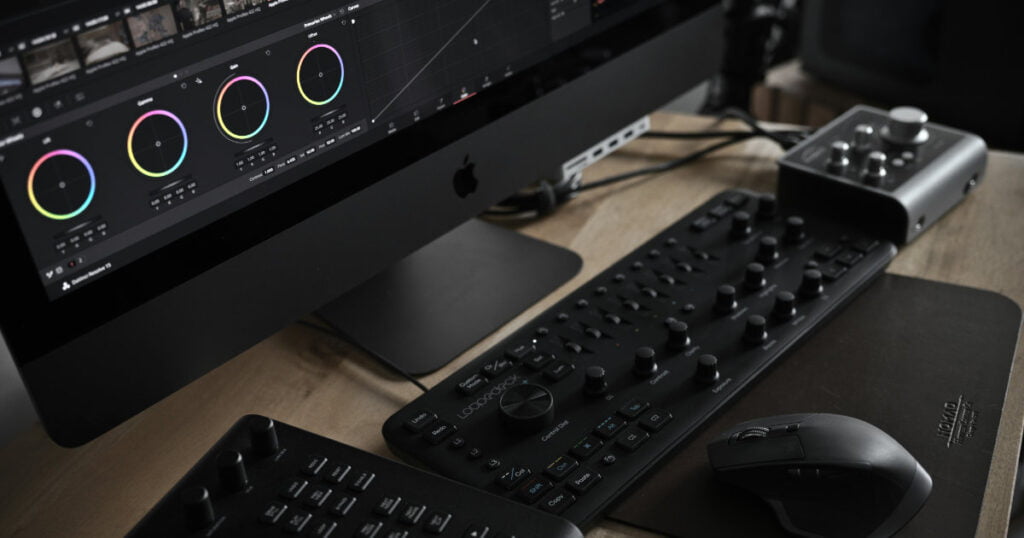Selecting the Ideal NAS System for Post-Production

In the world of post-production, the efficiency and reliability of data storage can significantly impact the creative process. Network Attached Storage (NAS) has become an essential tool for managing the large volumes of data generated in video editing and post-production work. This article delves into the critical role of NAS in post-production workflows, outlining its key features and benefits.

Choosing the Right NAS for Post Production
Selecting the ideal NAS for your post-production needs involves considering several crucial factors. Key among these are storage capacity and speed, which can greatly affect your workflow’s efficiency. This section will guide you through the essential elements to look for in a NAS system, ensuring that your choice aligns perfectly with your post-production requirements.
Top NAS Solutions for Post Production
Teams of 1-3
- Synology DS723+
- 2-Bay NAS
- AMD Ryzen R1600
- 2-36GB RAM
- 1Gbe & Optional 10GbE Upgrade
- Expandable storage with DX517
- QNAP TS-264
- 2-Bay NAS
- Intel Celeron J3455 quad-core processor
- 4-8GB RAM
- 1Gbe Connectivity with a PCIe upgrade slot for 10Gbe option
Teams of 4-10
- Synology DS923+
- 4-Bay NAS
- Dual Core AMD Ryzen R1600 CPU
- 4-32GB RAM
- 2x 1Gbe Port & 10GbE Optional Upgrade
- QNAP TS-464
- 4-Bay NAS
- Intel Celeron N5105 CPU
- 4-16GB RAM
- 2x 2.5Gbe Port
- Expandable with PCIe Gen 3×2 Slot
Teams of 11+
- Synology FlashStation FS3410
- 24-Bay NAS
- Intel Xeon D-1541
- 16-128GB RAM
- 4x 1GbE, 2x 10GbE & Optional 25/40GbE through PCIe
- QNAP TS-h1290FX
- 12-Bay NAS
- AMD EPYC 7232P CPU
- 64GB-1TB RAM
- 2.5 GbE & Optional 25GbE SFP28 Card
Side Note: Exploring High-End NAS Options
While the above NAS solutions cater to a wide range of post-production needs, some teams might require even more robust systems. High-end options from Dell, iXsystems, and ELEMENTS Media Storage are designed for those with advanced requirements. Dell offers enterprise-level solutions known for their reliability and scalability. iXsystems stands out with its FreeNAS/TrueNAS systems, offering open-source flexibility with powerful hardware. ELEMENTS Media Storage provides bespoke solutions tailored to high-end media production, offering unique features such as media asset management integration. These premium options are worth considering for large-scale, demanding post-production environments.
FAQs in Selecting NAS for Post Production
Do you really need a NAS?
Yes, especially if you handle multiple devices with extensive data. A NAS simplifies backups, provides quick data access, and enhances data security, making it a valuable asset for businesses and individuals handling significant amounts of data.
What is a server at home?
A home server, typically a NAS, acts like a centralized storage system, accessible over the internet or your home network. It’s ideal for storing, accessing, and backing up data, and can even support virtual computers, surveillance, and multimedia access.
What is meant by diskless NAS?
A diskless NAS is sold without hard drives, allowing you to choose and install your preferred drives. This flexibility can save costs and lets you customize your storage capacity and performance.
What is a NAS external hard drive?
A NAS external hard drive is a storage device accessible over the internet or a home network. It allows multiple devices like smartphones, laptops, and gaming consoles to access data without direct physical connections.
How do I connect to my NAS remotely?
You can connect to your NAS remotely using mobile applications provided by the NAS manufacturer or desktop applications from major brands like QNAP and Synology. Additionally, you can set up an iSCSI internet-accessible drive for remote access.
What is a NAS drive used for?
A NAS drive serves multiple purposes, including Apple Time Machine backups, synchronized backups of various devices, serving as a Plex Media Server, a file server, and a surveillance station. It’s versatile for both personal and business use.
What is a RAID hard drive?
A RAID hard drive is designed for use in a RAID (Redundant Array of Independent Disks) configuration, suitable for long-term operation and data sharing or duplication across multiple drives. It’s built for durability and reliable performance.
What is RAID on a NAS and the different types of RAID?
RAID on a NAS provides data redundancy to protect against drive failures. Popular RAID levels include RAID 0 (combined storage), RAID 1 (mirrored drives), RAID 5 (distributed data with parity), and RAID 6 (similar to RAID 5 but with double parity for extra safety).
What is a personal cloud storage device?
A personal cloud storage device, like a NAS, provides cloud-like storage in your home or office. It offers the convenience of cloud services but with better control and security, as the data is stored on-premises and can be encrypted.
How do you connect to a NAS?
You can connect to a NAS through your home network via cable or WiFi, over the internet using manufacturer-specific software, or as a network drive accessible via its IP address.
How does a NAS device work?
A NAS works like a dedicated computer for data storage, accessible across all your internet-enabled devices. It connects to your network, making stored data available both at home and remotely.
What are NAS drives for home?
NAS drives for home are designed for centralized data storage, supporting home-based applications like Plex, DLNA servers, Apple Time Machine backups, and IP camera surveillance. They typically use 2-Bay or 4-Bay setups.
Is there a difference between network drive, backup drive, network hard drive, and NAS drive?
The primary difference lies in their use. A network drive is a shared storage space on a network, a backup drive is solely for backups, a network hard drive is a large disk drive accessible over a network, and a NAS drive combines these functionalities with added features and accessibility options.

In summary, selecting the right NAS for post-production involves understanding your team’s specific needs, from the number of users to the type and volume of data handled. Whether you’re a solo editor or part of a larger team, there’s a NAS solution that can streamline your workflow, enhance data security, and provide efficient access to your projects. From 1Gbe-connected models ideal for small teams to more advanced 10Gbe and Thunderbolt-enabled systems for larger groups, the range of options ensures that there’s a perfect fit for every post-production scenario. Additionally, high-end solutions from Dell, iXsystems, and ELEMENTS Media Storage offer even more specialized features for demanding environments. Remember, investing in the right NAS system is not just about storage; it’s about securing your creative assets and enabling a more collaborative and efficient post-production process.






Responses